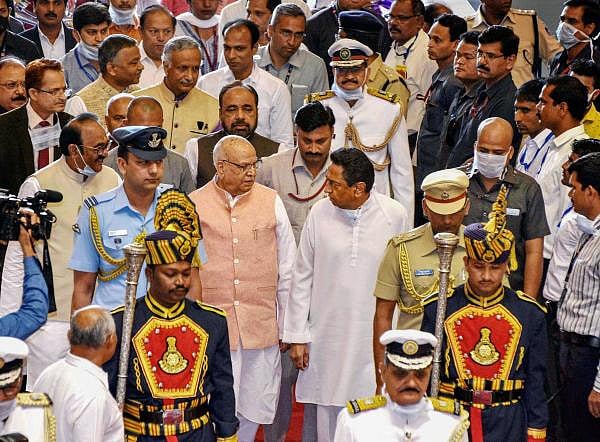
As uncertainty looms over floor test in Madhya Pradesh Assembly, the political crisis in the state continues to exist.
Madhya Pradesh Chief Minister Kamal Nath on Tuesday forwarded fresh directives given to him by state Governor Lalji Tandon on holding a floor test to Speaker of the Assembly for further action. Tandon wrote to Nath to hold a floor test on Tuesday, stating that the failure to do so will mean the CM does not enjoy a majority in the House.
What is a floor test?
A floor test is a constitutional mechanism that is used to prove if the ruling government enjoys the support of the legislature. A floor test is called for only when more than one party claims to form the government. This happens when the majority is not clear and the Governor of the state calls for a special session to establish a majority. The Speaker conducts the floor test to ascertain the majority.
In the case of Madhya Pradesh, if Kamal Nath fails to prove his majority, he will have to resign as the chief minister. Governor Lalji Tandon’s will then take a call on who will then form the government.
How does floor test take place?
The voting takes place in the Legislative Assembly in the presence of all MLAs who vote for parties claiming stake to form the government or in support or against the ruling government.
Also read — Is Madhya Pradesh heading for President's rule?
The chief minister has to prove they have the magic number -- the half-way mark, plus one. In case of Madhya Pradesh it will be 116. In case of a tie, the speaker would cast the deciding vote.
How do Madhya Pradesh numbers stack up?
In the previous election to 230-member Assembly, the Congress secured 114 seats while the BJP won 109 seats. The Congress then formed the government by securing the magic number with the help of BSP (2), SP (1) and independent candidates (4).
The state, however, plunged into a political crisis after Jyotiraditya Scindia, a senior Congress leader, resigned from the party last week to join the BJP. After his resignation, 22 Congress MLAs submitted their resignations, raising doubts over the Congress's majority in the state Assembly.
The BJP claims the Congress has been reduced to a minority government and thus it has been pressing the Speaker to hold a floor test. Speaker NP Prajapati had accepted the resignations of six ministers, bringing down the strength of the House to 222 and the majority mark is now 112. The resignations of 16 other MLAs have not been accepted so far.
